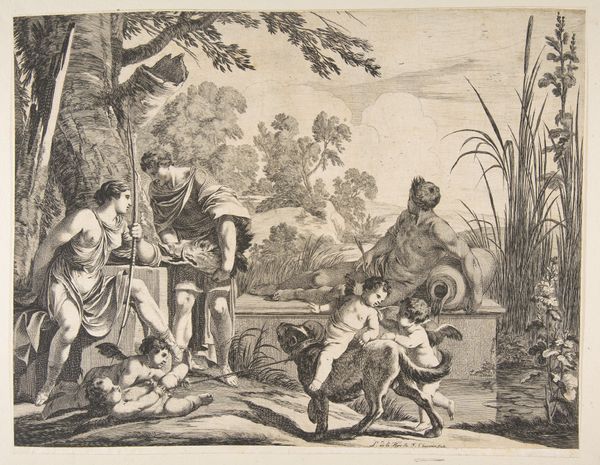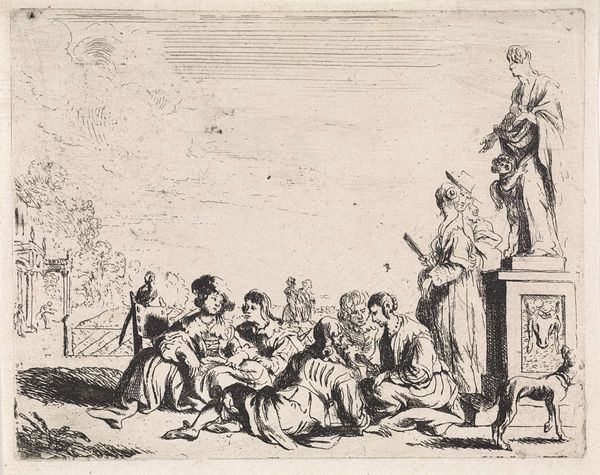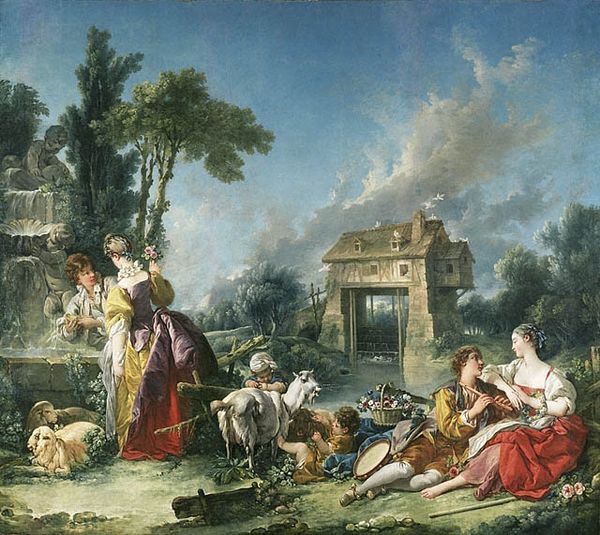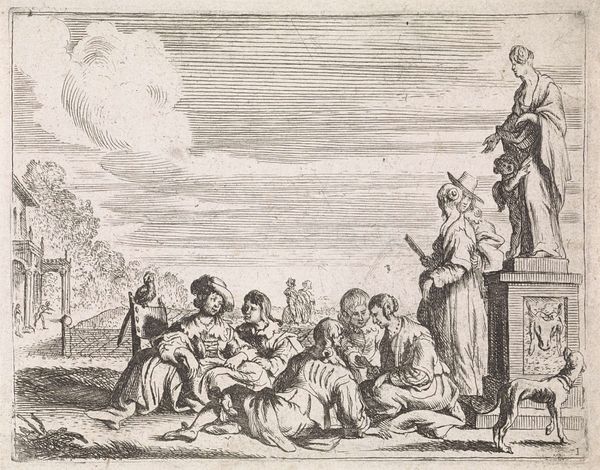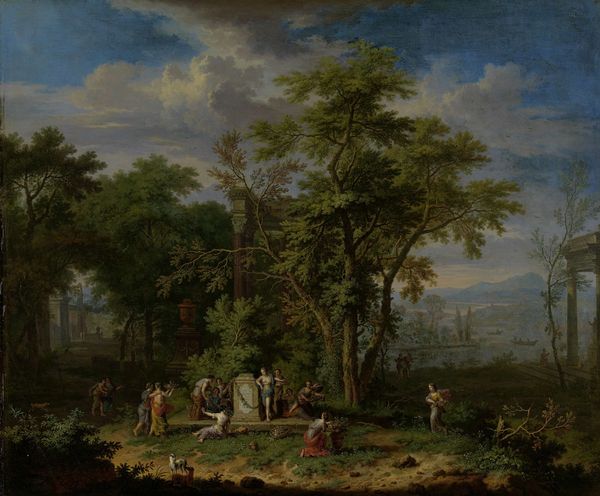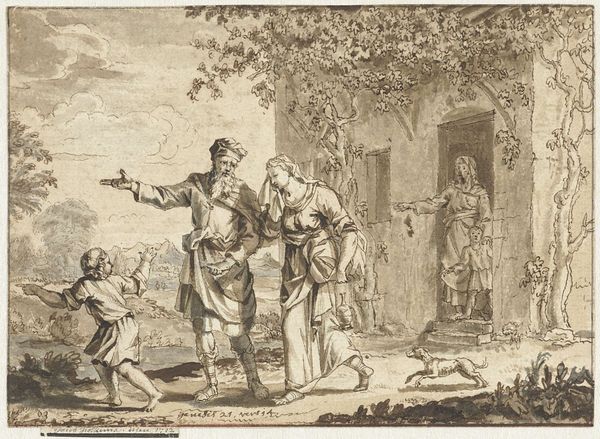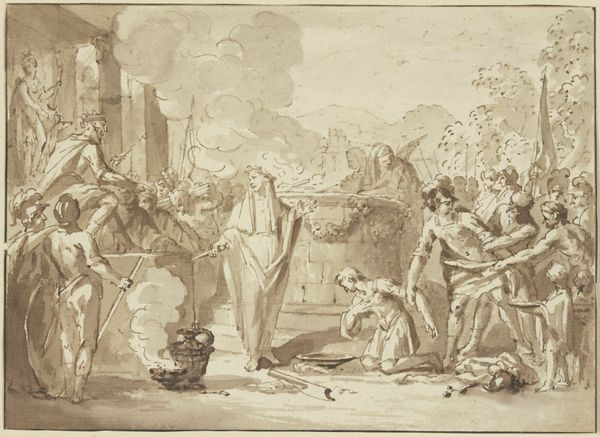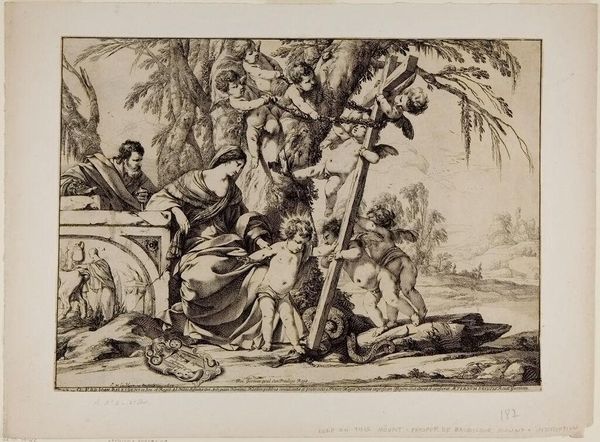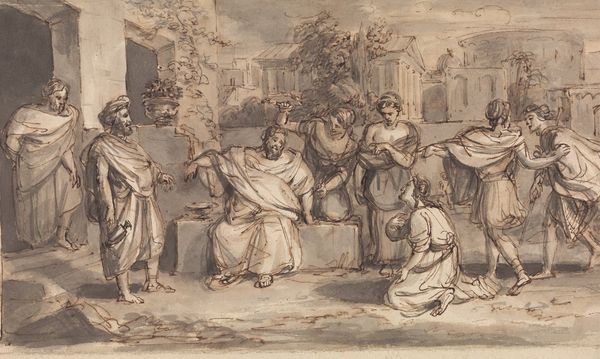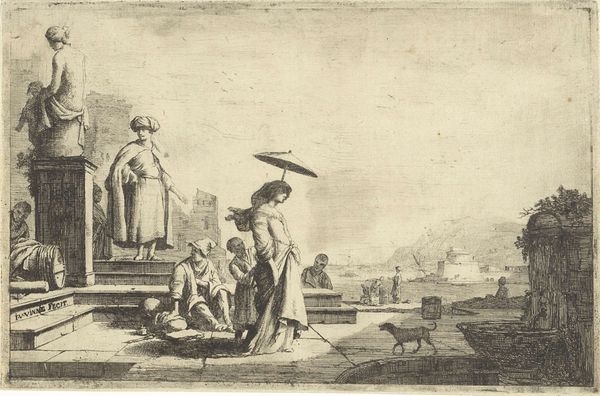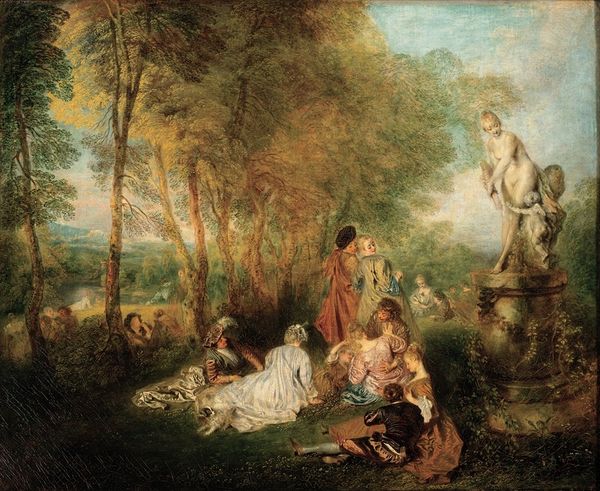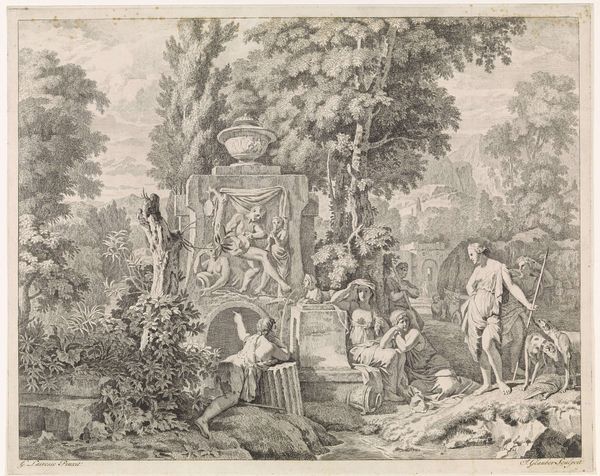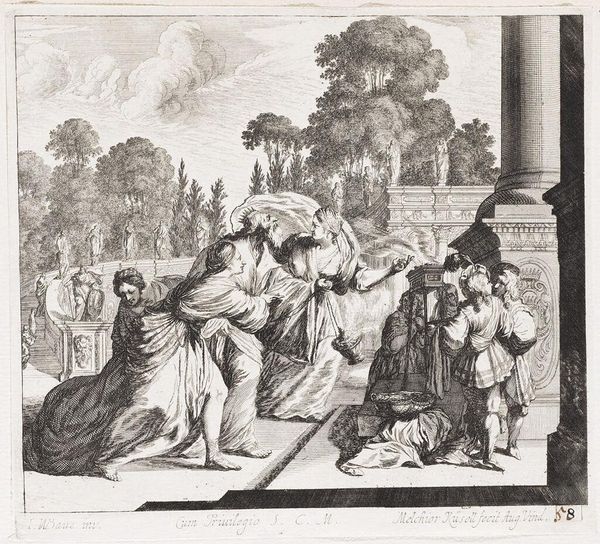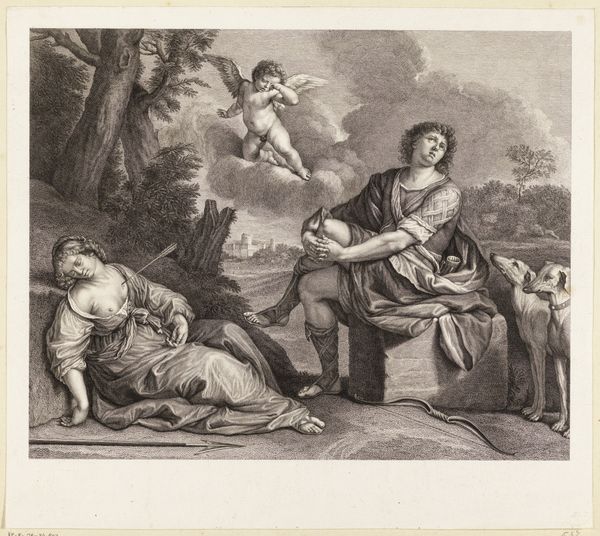
painting, oil-paint
#
gouache
#
figurative
#
baroque
#
painting
#
oil-paint
#
landscape
#
figuration
#
oil painting
#
genre-painting
#
mixed media
#
rococo
Copyright: Public Domain: Artvee
Editor: So, this is Jean-Antoine Watteau's "Les Charmes de la vie", dating from around 1718 to 1719. It's an oil painting. I’m immediately struck by its theatrical feel—almost like a scene from a play. What's your interpretation? Curator: It’s tempting to simply enjoy the idealized leisure represented here, but we must also consider the socio-political context. Watteau painted this during the Régence, a period of transition after Louis XIV's death. The aristocracy, freed from the constraints of the Sun King’s court, sought new forms of entertainment and self-representation. Notice how Watteau depicts this gathering in a theatrical space – a stage almost – framed by these architectural elements. Why do you think he does that? Editor: Hmm, maybe to highlight the performative aspect of their lives? Like, they are putting on a show, even when at leisure? Curator: Exactly. These are carefully constructed images intended for public consumption, meant to project a certain image of the aristocracy. Even their "charm" becomes a display. Consider, too, the presence of the young Black boy – a motif in European art of the period. What does his presence tell us about power dynamics? Editor: It's a stark reminder of the colonial wealth underpinning their lifestyle. He is essentially a prop signifying status and global reach. Curator: Precisely. Watteau's seemingly idyllic scene, therefore, becomes a window into the complex social realities of his time. It's a Rococo masterpiece, certainly, but also a document of privilege and its inherent inequalities. It reflects how museums have the potential to influence how these stories are received and interpreted. Editor: That gives me a lot to think about. I definitely saw the charm, but not the power structures so clearly. Curator: Seeing the charm is the initial pull! Recognizing what generates it makes viewing artworks more intriguing.
Comments
No comments
Be the first to comment and join the conversation on the ultimate creative platform.
